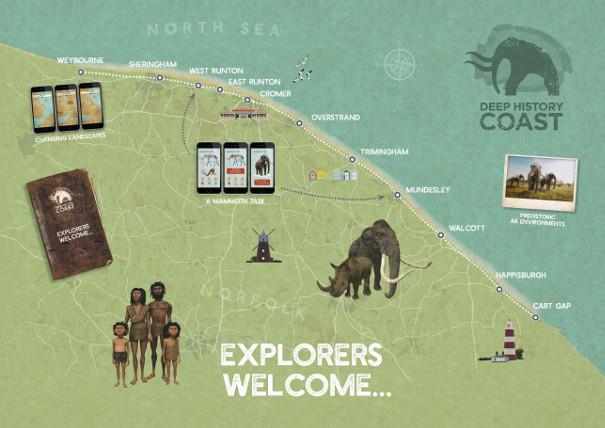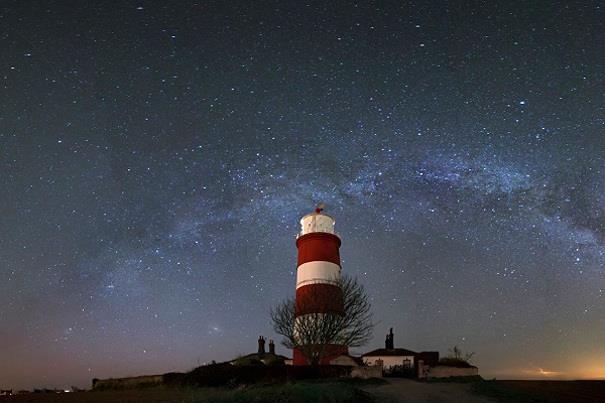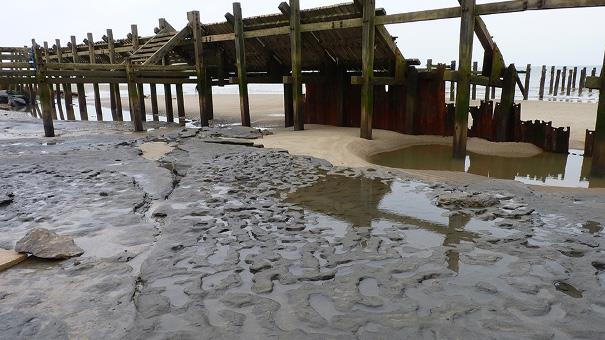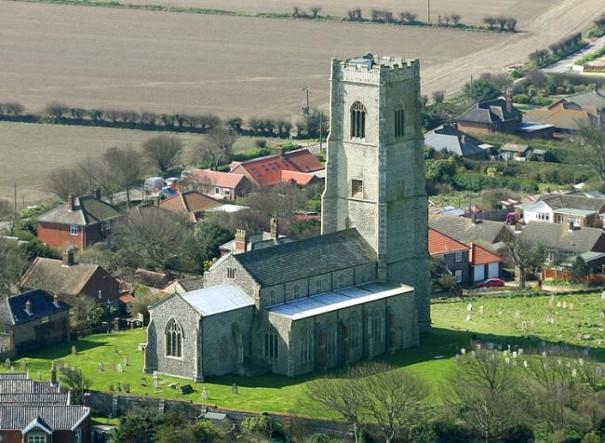North Norfolk's Deep History Coast is a 22-mile stretch of coastline between Weybourne and Cart Gap and is steeped in millions of years’ worth of history. With wonderful beaches, ideal for fossil and artefact hunting and a fascinating Discovery Trail, with fact revealing Discovery Points along the way, there is a lot to discover. There is a free downloadable Deep History Coast App to bring the trail to life linking with the Discovery Points along the way with information and interactive activities.
Through the app, you’ll be able to see the past come back to life and find out what life in Doggerland was like through the eyes of a hominin family, watch animals from 800,000 years ago roam the land and find out the names of any fossils you may find. Discovery Points are located at each of the main villages and towns. Here we focus on Happisburgh.

ABOUT HAPPISBURGH
Happisburgh is a village on the north Norfolk Deep History Coast situated between Walcott and Cart Gap. This historic village has a secluded sandy beach and a fascinating history showing the earliest signs of humans in Britain. The beach is dog friendly and great for days out. From here, you can walk as far as Sea Palling taking in wonderful views. The deep history finds here have rewritten history as we knew it. That and the constantly changing coastline, its 18th century lighthouse and 15th century church makes Happisburgh a fascinating place to explore.
EARLY HISTORY
Happisburgh (pronounced “Haze-bruh”) was spelt as ‘Hapesburg’ in the Domesday Book; the name means ‘Haep’s Town’. The most famous landmark in Happisburgh, is its red and white striped lighthouse. Built in 1790, originally one of a pair, the tower is 85ft tall and the lantern is 134ft above sea level. The ‘low light’ which was discontinued in 1883, was 20ft lower and the pair formed leading lights marking safe passage around the southern end of the treacherous Haisborough Sands. Saved as a working light by the local community, it is maintained and operated entirely by voluntary contributions.
St Mary’s church, another well-known landmark, also dominates the Happisburgh skyline and dates back to the 15th century. Its 110ft tower, overlooks the sea and is an important landmark warning mariners of the nearby sandbanks. Indeed, the graveyard has memorials to the many sailors who lost their lives in the treacherous waters, including the 119 sailors of HMS Invincible, who in were on their way to join Nelson in Copenhagen in 1801.
Happisburgh also had an important part to play in the Second World War due its coastal location. On the outskirts of the village by the coastal road towards Walcott and Bacton, past Blacksmith’s Lane on your right you will come across a pillbox; the site of the first of Happisburgh’s two radars. Nothing is now to be seen except a blast wall. You can find out more RAF Air Defence Radar Museum at Neatishead. The museum is home to a vast knowledge of radar matters in addition to the displays of equipment.

DEEP HISTORY
Today, Happisburgh is on the Deep History Coast Trail with a Discovery Point providing visitors with lots of interactive information about how the area looked millions of years ago.
The village is well known for the impact of coastal erosion which is particularly voracious along this part of the coast. Storm surges have all bitten further into the land, destroying homes and leaving the tattered edges of roads, fields and gardens. However, this coastal erosion has revealed some incredible pieces of deep history.
In 2000, a local man walking his dog on Happisburgh beach discovered an unusually shiny, ebony-black piece of flint sticking out of the mud below the high tide line. It turned out to be a 500,000 year-old, skilfully carved flint hand axe. Excavations were undertaken by the Ancient Human Occupation of Britain project between 2005 and 2010 and further flint tools were recovered, potentially as much as 950,000 years old.
This single discovery showed that humans had been present in Britain some 200,000 years earlier than had previously been known, meaning Norfolk has become the focus of international attention and study for being the earliest known location for humans in the whole of north-west Europe.
The flint tool, which can be seen at Norwich Castle Museum, was cutting-edge technology at the time and was as versatile as a complete set of knives today; similar to a Swiss Army knife. The hand axe was chosen as one of the objects that made up the ‘History of the World in 100 Objects’ project, a partnership between the BBC and the British Museum in 2010.
Then, during a storm in 2013, the sea stripped away the sand to expose the footprints of a Hominin family that had strolled this way, between 850,000 and 950,000 years ago. This evidence of humans being present in Britain at least 150,000 years earlier than had previously been thought has caused the rewriting of history. It is extremely rare for evidence of early hominins to survive, so finds such as these footprints are internationally important.
The Happisburgh Hominin footprints were examined in 2013 by a team of scientists led by the British Museum, Natural History Museum and Queen Mary University of London by making a recording of the surface through photogrammetry. The scientists concluded that this discovery was the earliest evidence of hominin footprints outside Africa. The footprints quickly disappeared through erosion but provided the first suggestion of the body size of the earliest humans in northern Europe. Measurement of the prints suggests that their heights varied from about 0.9m to over 1.7m.
Unfortunately, there have not been any discoveries of human bones in Britain of this age, however the British Museum's likely identification from the footprints is homo antecessor or ‘Pioneer Man’. Bones of this early human species have been found at the site of Atapuerca in northern Spain. The importance of the Happisburgh footprints is the tangible link they give to our forebears from the deep past.

THINGS TO DO IN HAPPISBURGH
Happisburgh is home to the oldest working light in the county and the only independently operated lighthouse in the UK. The 18th century famous red and white striped lighthouse offers wonderful views of the coast and countryside. In the summer, it is open to visitors on occasional Sundays.
St Mary’s 15th century church offers amazing views from its 110ft tower overlooking the sea. You can also see 30 churches, two lighthouses, seven water towers and even the Cathedral spire in the city of Norwich over 16 miles away from the top of the tower.
When visiting Happisburgh, the Discovery Point and Deep History Coast App will tell you more about the significant finds in this area and how it provided a new story in our history.
From the beach there are miles of coastal paths to walk and footpaths in the surrounding area. You can walk to Walcott, Cart Gap and Sea Palling beaches from Happisburgh, as well as follow a 1.75 mile trail around the village taking in the landmarks and historic buildings.

Related
Comments
Comments are disabled for this post.






